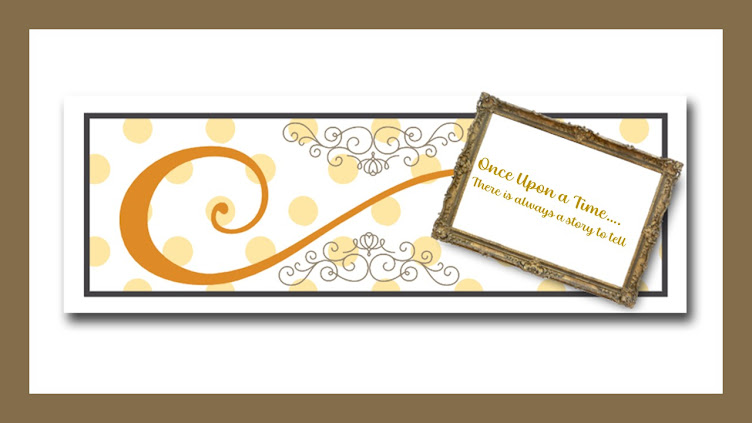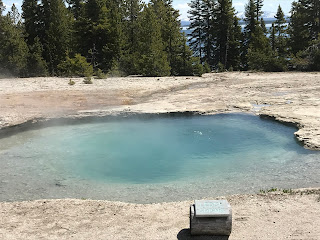West Thumb Geyser Basin is located right off of Yellowstone Lake. It was about a fifteen minute drive from our campsite. We hit it first thing in the morning before we headed south into the Tetons for the day.
This one has a fairly easy walk around the basin. It is all wheelchair accessible and there is only one little section with an incline. All together it is less than a mile walk. We were lucky and got a parking space right at the entrance of the trail.
There is a Historic Ranger Station at this site. It serves as a bookstore during the summer and a warming hut during the winter.
West Thumb is a caldera inside the larger Yellowstone caldera. There are a lot of thermal features inside the lake. In the winter, the water animals use those places of warmness to dive into the lake to eat. You will see the holes created by the much warmer water in those spaces.
In the summer, you can see the swirling of the features at the surface. It's pretty amazing. The water is still cold in the lake though, around 45 degrees.
The West Thumb was created by a large volcanic eruption that collapsed that part of the area. It was believed this eruption was around 174,000 years ago. A volcanic eruption caused all this awesomeness that is West Thumb. The power of the Earth is so powerful and wonderful and you never know what will actually happen.
This is the Bluebell Pool and the Seismograph pool. It has a beautiful color. Sometimes it turns a little muddy due to the run off from the mud pots located closely to it.
They all decided to do RBF for me. Thanks kiddos. :)
The Lakeside Spring.
The Lakeshore Geyser has two vents. While we were visiting it was still covered in water. In the late Summer, they become exposed and might spew a few feet. They have not had a major eruption since the 1930s. A small eruption did occur in 2003, but it's been inactive since. The mud pots have had more activity, so maybe this summer we will see some type of eruption.
The Black Pool is behind me. You can see that it is not so black. It used to be black. It was black because the temperature inside the pool was lower. The colors of the pools directly correspond with the temperature of the pools and what can grow inside it. Thermophiles are microorganisms that love heat. The black pool used to have brown and dark green ones causing the black color. The temperatures of this pool rose in 1991 killing all the microorganisms. We see the blue because the water is so hot now that not a lot of thermophiles can live in. We are seeing the clear blue color.
This is the Abyss pool. When you think of abyss, you think of dark and deep, right? Hence, the abyss name, this pool is 53 feet deep. One of the deepest in the whole park. That's saying a lot because there are a ton of pools around. The ranger stated this pool changes colors. It also used to eruption. The last major eruption period ended in June 1992. Now, it just sits there quietly.
One geyser with two vents. The last eruption was in 1999. I heard the eruptions used to be quite spectacular.
The pools and springs all pictured above are in the Central Basin of the West Thumb Geyser Basin. I'm not going to describe them all because I want you to go see them for yourself. Percolating Spring was my favorite though, I got some good clips of it.
Another view of the Thumb Paint Pots. You can actually see them better from this side.
When you visit West Thumb, you notice that it doesn't smell as much as the other ones. The features are less acidic than other parts of the park. This area will take you about 1-1.5 hours to visit. Take you time, watch, listen and enjoy.



























No comments:
Post a Comment